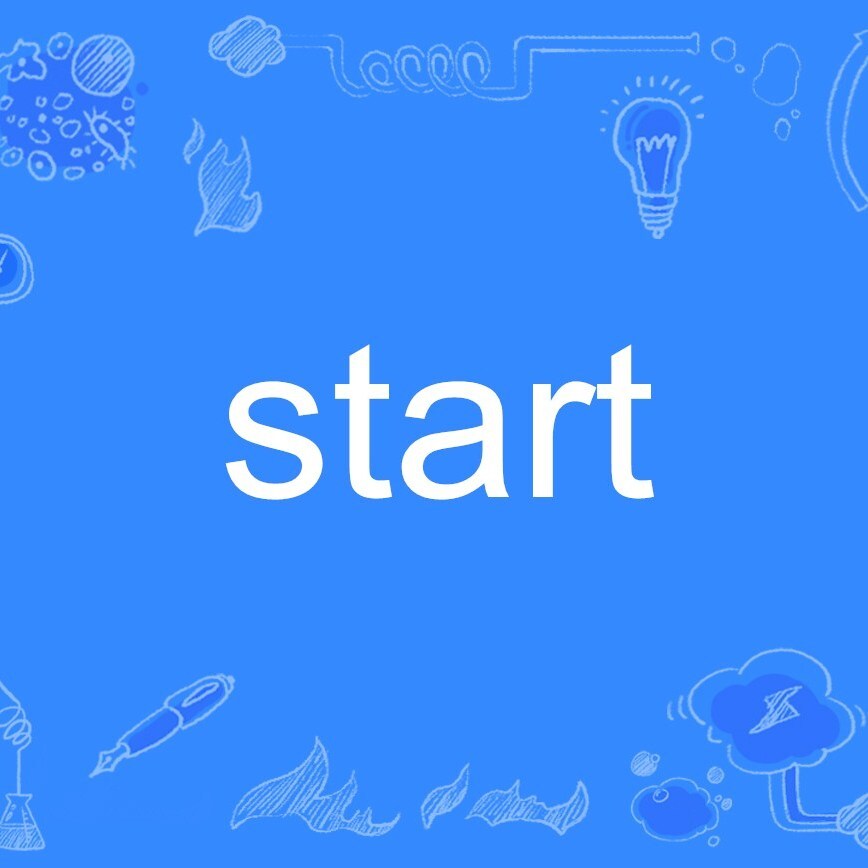Creating a supportive and focused meditation group at work can significantly enhance employee well-being and productivity. This guide provides a detailed roadmap, covering everything from initial planning and group dynamics to practical considerations and strategies for promoting participation. We’ll explore the essential steps to establish a thriving meditation group that fosters a positive and healthy work environment.
From determining the optimal time and location for sessions to creating a welcoming atmosphere, this comprehensive guide will equip you with the knowledge and tools necessary to lead a successful meditation initiative. We will also delve into strategies for addressing potential challenges and ensuring the long-term sustainability of the group.
Initial Planning

Establishing a meditation group at work requires careful planning to ensure its success and inclusivity. This process should be collaborative and supportive, engaging employees in a positive and enriching experience. A well-structured approach will help the group thrive and provide tangible benefits to its participants.
Step-by-Step Process for Forming a Group
A systematic approach facilitates a smooth and efficient process. Begin by gathering interest through a survey, and then select a suitable time and location. Define the type of meditation to be practiced and secure necessary resources. Finally, appoint facilitators and establish communication channels for ongoing support.
- Survey Employee Interest: A crucial first step is to gauge employee interest in a meditation group. A brief survey will help determine the level of interest and identify potential participants. This will allow the organizers to adapt the group’s structure to meet the needs of the employees.
- Select Meditation Type: Various meditation types exist, each with different focuses. Consider mindfulness meditation, which focuses on present-moment awareness; loving-kindness meditation, promoting compassion and empathy; or guided meditation, offering structured sessions. The best type depends on the target audience and desired benefits.
- Determine Time and Location: Choose a time and location convenient for most employees. Consider factors like available meeting rooms, lunch breaks, or after-work hours. A suitable location should be quiet, comfortable, and conducive to meditation.
- Announce the Group: Communicate the group’s details clearly and enthusiastically. Use various channels like emails, internal newsletters, or announcements during team meetings. Be clear about the benefits, frequency, and expectations of the group.
- Secure Necessary Resources: Ensure the chosen location has adequate space, seating, and any necessary equipment, such as cushions or blankets. These are crucial for a comfortable and conducive meditation experience.
- Appoint Facilitators: Designate individuals to lead the sessions. Consider individuals with experience in meditation or those who are passionate about promoting well-being. These individuals will guide the group and maintain a positive atmosphere.
Types of Meditation Practices
A variety of meditation practices are suitable for a workplace setting. The chosen practice should align with the group’s goals and preferences.
- Mindfulness Meditation: This involves focusing on the present moment without judgment. It cultivates awareness of thoughts and sensations, promoting calmness and focus. Suitable for beginners and experienced practitioners alike.
- Loving-Kindness Meditation: This practice cultivates feelings of compassion and kindness towards oneself and others. It fosters empathy and promotes positive interpersonal relationships. Especially helpful for fostering a supportive work environment.
- Guided Meditation: This involves following the instructions of a facilitator, often through audio or visual cues. Suitable for beginners or those seeking structure and guidance in their practice. These can be customized for specific needs and can be adapted for different settings.
Communication Strategies
Effective communication is essential for successful group formation. Clear communication about the group’s purpose and expectations will foster enthusiasm and participation.
- Survey Template: The following survey template can help gauge employee interest.
Question Answer Options Are you interested in participating in a workplace meditation group? Yes / No If yes, what type of meditation practice are you most interested in? Mindfulness / Loving-Kindness / Guided / Other (please specify) What days and times would work best for you? (List available options) What is your preferred location for the sessions? (List available options) - Effective Communication Examples: Announce the group using emails, internal newsletters, or team meetings. Keep the announcement concise and engaging. Highlight the benefits of meditation, such as stress reduction and improved focus. Provide clear instructions on how to join or participate.
Essential Resources
Providing the necessary resources is crucial for a successful meditation group. A comfortable and conducive environment fosters a positive and supportive experience.
- Space: A quiet and comfortable space, free from distractions, is essential for a focused meditation practice. This could be a meeting room, a designated area, or even a quiet corner.
- Seating: Ensure adequate seating options, such as cushions, chairs, or benches. Comfortable seating is vital for a relaxed and supportive experience.
- Materials: Consider providing optional materials, like blankets, pillows, or eye masks, to enhance the comfort and relaxation of participants.
Potential Facilitators
Identifying qualified individuals is crucial for the group’s success. Their expertise and enthusiasm can significantly impact the group’s atmosphere and effectiveness.
- Experienced Meditators: Individuals with extensive meditation experience can guide the group effectively. They understand the nuances of different meditation techniques and can provide appropriate guidance and support.
- Well-being Enthusiasts: Individuals passionate about promoting well-being and mindfulness can be excellent facilitators. Their enthusiasm and dedication can motivate participants and create a positive environment.
Group Dynamics and Structure
Cultivating a supportive and inclusive environment is paramount for the success of any workplace meditation group. A well-structured group fosters a sense of community and encourages consistent participation, ultimately benefiting the overall well-being of its members. This section Artikels key strategies for building a positive dynamic and ensuring a smooth experience for everyone.Effective group dynamics require careful planning and consideration of individual needs.
A supportive atmosphere allows participants to fully engage with the practice without fear of judgment or exclusion. This section provides strategies for creating such an environment, addressing diverse meditation preferences, facilitating communication, and managing potential conflicts.
Creating a Welcoming and Supportive Atmosphere
A welcoming atmosphere is essential for encouraging participation and creating a positive experience. Emphasize the benefits of meditation for mental well-being and stress reduction. Clearly communicate the group’s objectives and expectations to ensure everyone understands the purpose and the importance of respecting individual practice styles. Encouraging open communication and active listening fosters a sense of shared understanding and belonging.
Managing Diverse Meditation Styles and Preferences
Participants may have varying backgrounds, preferences, and experience levels regarding meditation. Acknowledge and respect the diversity of styles. The group should be open to different types of meditation, like mindfulness, focused attention, loving-kindness, or body scan meditation. Facilitating an inclusive environment allows individuals to choose methods that best suit their needs and preferences. By understanding the varied needs, the group can accommodate these styles.
Fostering Open Communication and Active Listening
Open communication is key to addressing concerns and ensuring everyone feels heard. Encourage members to share their experiences, challenges, and insights in a safe and respectful manner. Active listening, paying close attention to what others are saying, not just waiting to respond, is crucial. This involves creating space for all voices to be heard and acknowledged.
Handling Potential Conflicts or Disagreements
Disagreements or conflicts may arise in any group setting. Establishing clear ground rules from the start can help manage potential issues. Encouraging open and respectful dialogue to resolve any conflicts is essential. A mediator or facilitator, if available, can help guide discussions to constructive outcomes. Conflict resolution strategies should be proactively discussed and incorporated into the group’s guidelines.
Examples of Group Meditation Exercises
Group meditation exercises can enhance the experience and provide a shared sense of purpose. Guided meditations, such as those focusing on gratitude or compassion, can be particularly effective in a work environment. Shared breathwork exercises, where participants synchronize their breathing, can promote relaxation and connection. Body scan meditations, where participants focus on different body parts, can help to reduce physical tension.
Simple mindfulness exercises, focusing on present-moment awareness, can also be a great option.
Sample Schedule for Meditation Sessions
A consistent schedule fosters a sense of routine and predictability, making it easier for members to integrate meditation into their daily lives. A sample schedule could include weekly sessions of 15-20 minutes, held during a designated break or lunch time.| Day | Time | Activity ||————|————|——————————————-|| Monday | 12:00 PM | Guided Meditation on Gratitude || Wednesday | 12:00 PM | Mindfulness Exercise || Friday | 12:00 PM | Compassionate Meditation |
Ensuring Accountability and Consistency
Accountability and consistency are essential for sustained practice. A simple system, like a shared online platform or a physical attendance log, can help track participation. Encourage members to commit to a regular practice schedule, recognizing that consistency is key for experiencing the benefits of meditation. A shared understanding of the group’s objectives and expectations, as well as a supportive environment, can promote consistent participation.
Practical Considerations

Establishing a workplace meditation group requires careful planning to ensure its success and positive impact on employees. This section Artikels key practical aspects, from the benefits of meditation to navigating potential challenges. Successful implementation depends on thoughtful consideration of employee needs and the integration of the program into the existing work environment.
Benefits of Meditation for Workplace Productivity and Well-being
Meditation fosters a calmer and more focused state of mind, leading to improved concentration and reduced stress. This translates to increased productivity and efficiency in the workplace. Studies have shown a correlation between regular meditation practice and decreased instances of burnout and improved overall well-being. Employees experiencing reduced stress and improved focus often report enhanced job satisfaction and a more positive work environment.
Ensuring Confidentiality and Respecting Individual Needs
Maintaining confidentiality is crucial for fostering a safe and comfortable environment for all participants. Establish clear guidelines regarding the sharing of personal information and encourage a non-judgmental atmosphere. Recognize that individual needs and preferences vary. Offer a range of options, such as different meditation styles (e.g., mindfulness, loving-kindness) and session lengths, to accommodate diverse preferences. Provide clear options for those who may need additional support or have specific requirements.
Integrating the Meditation Group into the Existing Work Schedule
Integrating the meditation group into the existing work schedule requires careful consideration of employee availability. Propose a variety of session times, accommodating different shifts and schedules. Consider offering multiple session options to cater to varied preferences, such as morning, lunch breaks, or after-work sessions. Communicate clearly about session schedules and locations to minimize disruption to work.
Comparing Different Meditation Session Durations and Their Effects
Different session durations have varying effects on participants. Shorter sessions (e.g., 10-15 minutes) can be beneficial for quick stress relief and focus enhancement. Longer sessions (e.g., 30-45 minutes) provide a more comprehensive experience, potentially promoting deeper relaxation and improved mindfulness. The most suitable duration depends on the specific goals of the group and the availability of employees.
A phased approach, beginning with shorter sessions and gradually increasing the duration, might be appropriate.
Handling Employee Absences or Changes in Availability
Anticipate potential absences and schedule flexibility. Establish a system for communicating session information and recording attendance. Have a plan for covering missed sessions, such as providing recordings or summaries. Provide options for employees with changing schedules to adjust their participation accordingly.
Possible Obstacles to the Group’s Success and Potential Solutions
Several factors could hinder the success of the meditation group. Lack of employee interest or commitment is a potential obstacle. Addressing this requires strong communication, enthusiastic promotion, and emphasizing the benefits. Scheduling conflicts can also arise. Flexible session times and accommodating different availability levels can mitigate this challenge.
Finally, resistance from management can be a significant barrier. Gaining support and demonstrating the value of the program are essential to overcome this.
Process for Obtaining Necessary Permissions or Approvals from Management
Securing management approval is essential for the group’s legitimacy and sustainability. Prepare a concise proposal outlining the benefits of the program, anticipated participation levels, and the projected cost. Include a detailed schedule, a description of the program, and estimated costs for the meditation group. Clearly demonstrate how the program aligns with organizational goals and objectives. Present a well-structured proposal, emphasizing the potential return on investment for the organization and demonstrating the positive impact on employee well-being.
Address any concerns or questions management may have.
Promoting Participation

Encouraging colleagues to participate in a workplace meditation group requires a multifaceted approach. A positive and welcoming atmosphere is crucial to overcoming potential hesitation and fostering a sense of community. By understanding and addressing concerns, and by designing engaging and accessible sessions, the group can effectively attract and retain members.
Strategies for Positive Image
Promoting meditation as a valuable tool for well-being, rather than a fringe practice, is key. Highlighting the benefits of mindfulness for stress reduction, improved focus, and enhanced emotional regulation can help dispel misconceptions. Sharing personal testimonials from colleagues who have benefited from meditation can also be a powerful way to build trust and credibility. Emphasize that meditation is not a religious practice, but rather a secular technique for self-improvement.
Addressing Skepticism and Concerns
Skepticism about meditation is often rooted in a lack of understanding. Preparing concise, accessible information about the basics of meditation, its various styles, and its potential benefits can effectively address these concerns. Offering introductory sessions or workshops, explaining different types of meditation, and answering questions openly and honestly can help build confidence and reduce anxiety about trying meditation.
Addressing concerns about time constraints or perceived difficulty is also important; demonstrating that meditation can be integrated into busy schedules and tailored to individual needs can help.
Role of Group Leaders
Group leaders play a vital role in fostering participation. Their approachable demeanor, active listening, and willingness to answer questions openly and honestly can significantly impact engagement. Leaders should be patient and understanding, creating a supportive environment where everyone feels comfortable. Providing clear instructions and demonstrating the practice can also help new participants feel confident and less intimidated.
Group leaders should also be knowledgeable about various meditation techniques and be able to adapt them to different needs and levels of experience.
Engaging and Accessible Sessions
Engaging meditation sessions are essential for maintaining interest and promoting participation. Varying the types of meditation, incorporating guided imagery, and using calming music can help keep sessions dynamic. Keeping sessions brief and focused on achievable goals is also crucial. Providing clear instructions, breaking down the practice into manageable steps, and providing options for different levels of experience will help make meditation accessible to all participants.
Providing diverse types of meditation can also help accommodate various personality types.
Tailoring Practices to Different Types
Meditation practices should be tailored to various personality types and work styles. Some individuals might benefit from a more structured, guided meditation, while others might prefer a more informal, self-directed approach. Offering a variety of session formats, including individual, group, and guided options, allows participants to choose a style that best suits their needs. Providing choices in duration, from short 10-minute sessions to longer 20-minute practices, caters to different schedules and commitments.
Sample Newsletter/Email Template
Subject: Discover Mindfulness at Work: Join Our Meditation Group!Body:Hi Team,Are you looking for ways to reduce stress and boost focus in your workday? Our new workplace meditation group is starting soon!Join us for guided meditation sessions designed to help you find calm and clarity amidst your daily tasks.Learn more and sign up: [Link to Sign-Up]
Celebrating Milestones and Successes
Celebrating milestones and successes reinforces positive behaviors and encourages ongoing participation. Acknowledging individual progress, recognizing collective efforts, and sharing success stories can motivate participants. Simple gestures like acknowledging participants who have attended regularly or hosting a small group appreciation gathering can greatly impact the group’s morale. A dedicated space on the company intranet to share experiences or reflections could also be a valuable resource.
Maintaining the Group

Sustaining a thriving meditation group at work requires ongoing effort and attention to member needs. A supportive and engaging environment fosters consistent participation and long-term value for all members. This section Artikels strategies for maintaining the group’s momentum and ensuring its continued relevance.Ongoing support and encouragement are crucial for maintaining member motivation and enthusiasm. Regular acknowledgment of participation and shared experiences fosters a sense of community and belonging.
This support network is vital for sustaining interest and helping individuals overcome challenges in their practice.
Addressing Declining Participation
Identifying the reasons behind declining participation is essential for addressing the issue proactively. This might involve individual conversations to understand potential barriers, such as scheduling conflicts, evolving needs, or personal challenges. Addressing these concerns directly and empathetically can often rekindle interest and encourage continued participation.
Roles and Responsibilities of Group Leaders
Leaders play a critical role in maintaining the group’s vitality. Their responsibilities extend beyond facilitating sessions to include actively nurturing a supportive environment. This includes promoting open communication, actively listening to member feedback, and being responsive to changing needs. Furthermore, leaders should model consistent practice and demonstrate a genuine commitment to the group’s success.
Adapting to Changing Needs and Circumstances
The needs and circumstances of individuals within a workplace can evolve. Flexibility is key to adapting meditation sessions to meet changing needs. This may involve offering different types of sessions (e.g., shorter sessions, specialized topics, or alternative formats). Regularly assessing member feedback and preferences is crucial for maintaining relevance and value.
Ensuring Relevance and Value
The relevance and value of the meditation group should be regularly evaluated and refined. This can involve incorporating feedback from members, seeking input on session content, and introducing new practices or topics to keep the sessions engaging and fresh. This iterative approach ensures the group remains a valuable resource for its members.
Ongoing Evaluation and Feedback
Regular evaluation of the group’s effectiveness is essential. This includes gathering feedback from members on various aspects, such as session content, facilitation style, and overall experience. This feedback loop ensures that the group remains responsive to member needs and preferences. Data collected from evaluations can be used to refine the program and make improvements.
Succession Planning
Succession planning for leadership within the group is important for long-term sustainability. This involves identifying potential successors and providing training or mentorship opportunities. Establishing a clear process for transitioning leadership ensures a smooth and effective leadership handover, maintaining the continuity of the group’s purpose and direction.
Final Summary

In conclusion, establishing a meditation group at work requires careful planning, thoughtful execution, and a commitment to fostering a supportive environment. By following the steps Artikeld in this guide, you can create a valuable resource for employees seeking to improve their well-being and enhance their overall work experience. The benefits, ranging from increased focus to reduced stress, can significantly contribute to a healthier and more productive workplace.